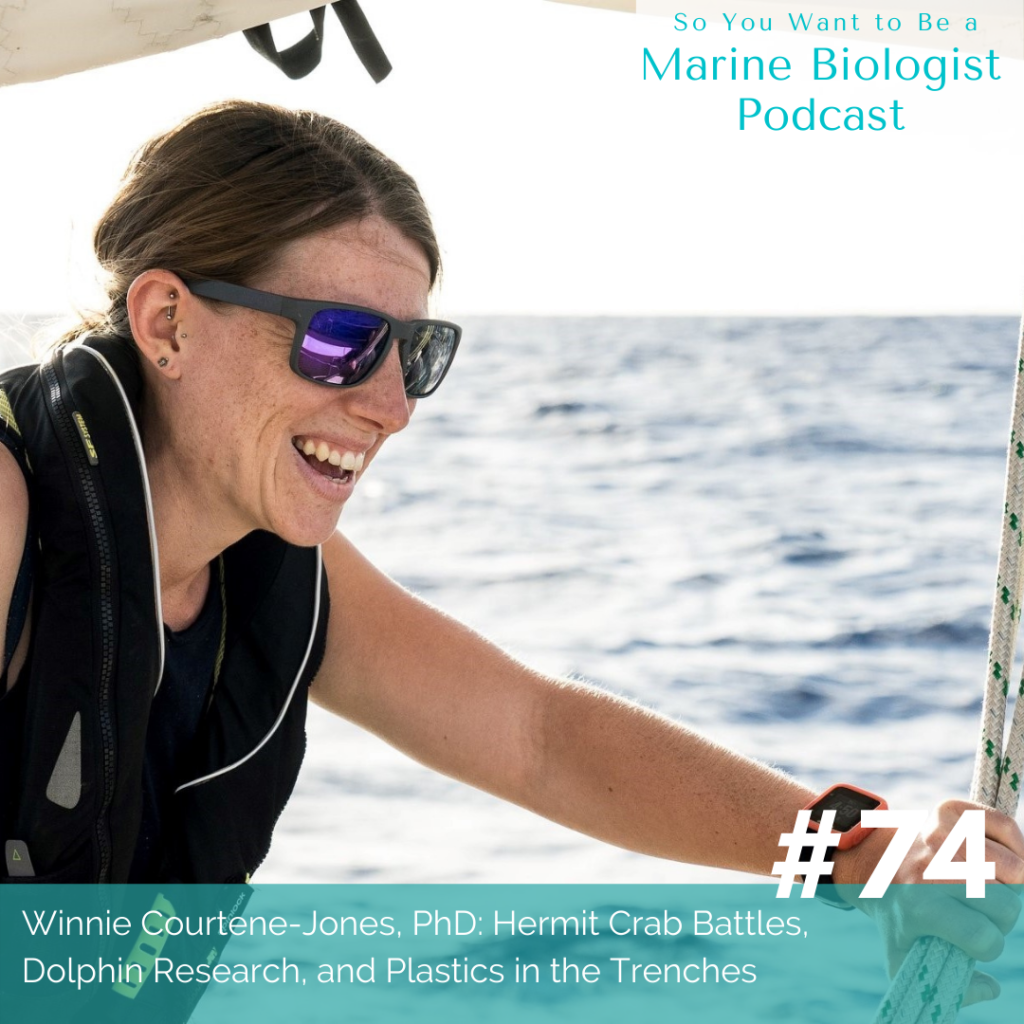Winnie Courtene-Jones is a researcher at the University of Plymouth in their International Marine Litter Research Unit. We had such a fun conversation today starting with Winnie’s volunteer position studying dolphins off the coast of Wales. Winnie shares her graduate research of, essentially, watching hermit crabs duke it out, and how she definitely wasn’t going to get PhD. Until she did. She also explains what being self employed in the marine science means. Winnie’s research has taken her all over the world, and has found plastic in some surprising places- including over a mile beneath the ocean’s surface.
Winnie is a font of knowledge when it comes to plastic and plastic pollution, and she breaks down where it’s found, what the ‘great garbage patches’ really look like, and if biodegradable plastics are actually a thing. Her conservation ask is a great one, so be sure to stay tuned for that.
Connect with Winnie: Uni of Plymouth| Twitter
Quick Links
Wales
Sea Watch Foundation
Basking shark
Nudibranchs
Bangor University
University of Plymouth
Belize
Swansea University
Tanzania
Lionfish as an invasive species
Scottish Association for Marine Science
The deep sea
Rockall Trough
Benthic invertebrates
Polyethylene
Polyamide
Epibenthic sled
Gravity corer
Microplastics
Microfibers
Fast fashion
eXXpedition
Manta Trawl
Nurdle hunt
Jewelry out of nurdles
Gyres and oceanic garbage patches
Great Pacific Garbage Patch
Biodegradable plastic – what exactly does this mean
Petrochemicals
Ocean Cleanup project
Show Notes
00:20 – Winnie didn’t start out thinking she would be a marine biologist while she was in school. Scuba diving changed that for her.
6:24 – For her Master’s, Winnie studied the personality and behavior in hermit crabs, which is very different from her research now.
8:15 – Winnie decided to take a break from academia after her Master’s. She wasn’t sure whether or not she wanted to get her PhD. Listen to Winnie talk about her experience post-graduate school as a self-employed marine consultant.
13:12 – Winnie shares why she went back to academia to get her PhD.
13:58 – While Winnie was in Belize, she noticed that every day, with every tide, the sea would wash up plastic. “It just became more and more confronting that, wherever we went – all these places that I’ve traveled to – plastics were everywhere.”
15:59 – Winnie’s PhD involved looking at the amount and types of plastics she and the other scientists were finding in the deep sea of the North Atlantic.
18:29 – Winnie provides insight into how she and the other scientists collected samples of plastics in the deep sea. “We’re talking huge depths, so a lot of it is just sending down equipment and having all your fingers crossed that it’s actually going to do what you think it’s going to do.”
21:28 – The general consensus is that any plastic item smaller than about 5 millimeters in diameter is considered microplastic. But in terms of plastics in the ocean, it’s obviously a huge continuum.
24:10 – Scientists are finding plastic everywhere. Specifically, though, Winnie found that one of the most pervasive forms of plastics she kept seeing in her findings were fibers made out of either polyester, acrylic, or polyamide.
26:08 – Are there steps that we can take to decrease microplastics? Since her PhD research, Winnie has done more and more solution-thinking regarding plastic pollution. In terms of textiles, Winnie cites fast fashion as a big offender, and not only when it comes plastics.
27:16 – Since her PhD, Winnie has done some really cool stuff, including working as the science lead at eXXpedtion during their initiative to circumnavigate the globe looking for plastic pollution.
31:57 – Winnie describes for listeners what a Manta trawl is and how it would look as it’s being towed by a boat.
36:12 – Biodegradable plastics – Kara and Winnie discuss what “biodegradable” actually means in the context of plastics.
39:59 – Winnie explains what exactly “nurdles” are, and why there is an organization in the UK to “hunt” them.
44:51 – Winnie traveled to some amazing and remote places while on the eXXpedition endeavor to circumnavigate the world, but going through the North Atlantic gyre was her favorite experience.
45:52 – Winnie’s favorite sea creature brings up a marine biology debate. What do you call these creatures?
46:35 – There are a lot of different chemicals within plastic, and these chemicals can leach out as the plastic breaks down. But we still don’t really understand the effects these chemicals have on the environment or even how long they stay within the environment. That’s why, with a blank check, Winnie would invest some of her money into more comprehensive studies related to this topic.
49:34 – There are things we can do on an individual level to reduce the amount of plastic pollution, but more significantly, there are things that need to change on a higher, policy level. Part of Winnie’s ask for the audience is for listeners to write to local representatives and/or big companies about their waste management policies and strategies.
